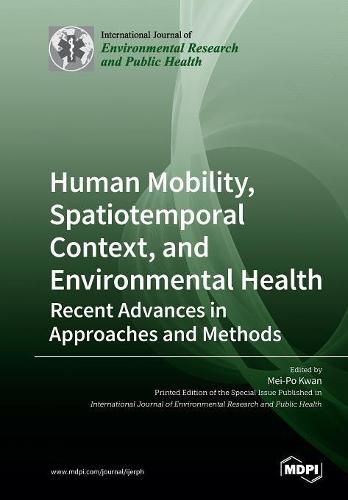Readings Newsletter
Become a Readings Member to make your shopping experience even easier.
Sign in or sign up for free!
You’re not far away from qualifying for FREE standard shipping within Australia
You’ve qualified for FREE standard shipping within Australia
The cart is loading…






This title is printed to order. This book may have been self-published. If so, we cannot guarantee the quality of the content. In the main most books will have gone through the editing process however some may not. We therefore suggest that you be aware of this before ordering this book. If in doubt check either the author or publisher’s details as we are unable to accept any returns unless they are faulty. Please contact us if you have any questions.
Environmental health researchers have long used concepts like the neighborhood effect to assessing people’s exposure to environmental influences and the associated health impact. However, these are static notions that ignore people’s daily mobility at various spatial and temporal scales (e.g., daily travel, migratory movements, and movements over the life course) and the influence of neighborhood contexts outside their residential neighborhoods. Recent studies have started to incorporate human mobility, non-residential neighborhoods, and the temporality of exposures through collecting and using data from GPS, accelerometers, mobile phones, various types of sensors, and social media. Innovative approaches and methods have been developed. This Special Issue aims to showcase studies that use new approaches, methods, and data to examine the role of human mobility and non-residential contexts on human health behaviors and outcomes. It includes 21 articles that cover a wide range of topics, including individual exposure to air pollution, exposure and access to green spaces, spatial access to healthcare services, environmental influences on physical activity, food environmental and diet behavior, exposure to noise and its impact on mental health, and broader methodological issues such as the uncertain geographic context problem (UGCoP) and the neighborhood effect averaging problem (NEAP). This collection will be a valuable reference for scholars and students interested in recent advances in the concepts and methods in environmental health and health geography.
$9.00 standard shipping within Australia
FREE standard shipping within Australia for orders over $100.00
Express & International shipping calculated at checkout
This title is printed to order. This book may have been self-published. If so, we cannot guarantee the quality of the content. In the main most books will have gone through the editing process however some may not. We therefore suggest that you be aware of this before ordering this book. If in doubt check either the author or publisher’s details as we are unable to accept any returns unless they are faulty. Please contact us if you have any questions.
Environmental health researchers have long used concepts like the neighborhood effect to assessing people’s exposure to environmental influences and the associated health impact. However, these are static notions that ignore people’s daily mobility at various spatial and temporal scales (e.g., daily travel, migratory movements, and movements over the life course) and the influence of neighborhood contexts outside their residential neighborhoods. Recent studies have started to incorporate human mobility, non-residential neighborhoods, and the temporality of exposures through collecting and using data from GPS, accelerometers, mobile phones, various types of sensors, and social media. Innovative approaches and methods have been developed. This Special Issue aims to showcase studies that use new approaches, methods, and data to examine the role of human mobility and non-residential contexts on human health behaviors and outcomes. It includes 21 articles that cover a wide range of topics, including individual exposure to air pollution, exposure and access to green spaces, spatial access to healthcare services, environmental influences on physical activity, food environmental and diet behavior, exposure to noise and its impact on mental health, and broader methodological issues such as the uncertain geographic context problem (UGCoP) and the neighborhood effect averaging problem (NEAP). This collection will be a valuable reference for scholars and students interested in recent advances in the concepts and methods in environmental health and health geography.